MARIANI’S
January
28, 2007
NEWSLETTER

WEBSITE: To
go to my web site, in which I will update food
&
travel information and help link readers to other first-rate travel
& food sites, click on: home page
ARCHIVE: Readers may now access
an
Archive of all past newsletters--each annotated--dating back to July,
2003, by simply clicking on www.johnmariani.com/archive
SUBSCRIBE AND UN-SUBSCRIBE:
You may subscribe anyone you wish
to this newsletter--free of charge--by
clicking here.
In
This Issue
NEW YORK CORNER: Ben Benson's Steakhouse by John Mariani
NOTES FROM THE WINE CELLAR: Very Nice Ice by John Mariani
QUICK BYTES
~~~~~~~~~~~~~~
DINING OUT IN GREENWICH by John Mariani

420 Field Point Road
www.homesteadinn.com
The dining room, named Thomas Henkelmann at the Homestead Inn, in the estate’s 19th century timbered mansion, combines the basic country elements of rustic stone and big fireplaces, with contemporary designs--leaded glass windows with frames based on Frank Lloyd Wright designs, Mark Inc. carpets, Edelman Leather chairs, Seltmann china, fine napery, Christofle silverware, and Spiegelau stemware. True, the heavy Romanesque chairs don't seem to have much to do with the rest of the decor, but the lineaments of the room still have the cast of the 19th century.
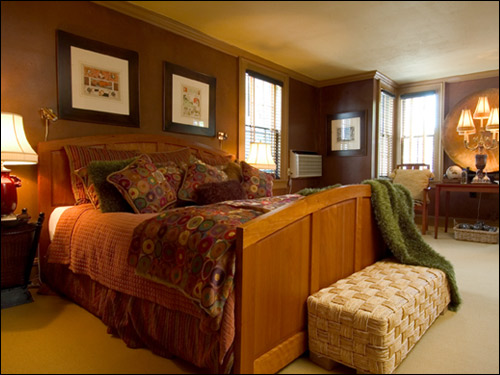 Before
the Henkelmanns took over, the restaurant had long been popular with a
very
conservative Old Money clientele that came for the very staid suburban
French
fare. For the first few years, Chef Thomas played it pretty safe with
his blue
blazer guests, gearing his menu to the classics of French cooking
served in
rather fussy presentations. But as his clientele grew younger and more
discerning, the German-born chef slowly brought the kitchen to haute
cuisine
status, based on his own training at three-star Michelin restaurants
like Auberge
de'l'Ill in Alsace and Aubergine in Munich.
Before
the Henkelmanns took over, the restaurant had long been popular with a
very
conservative Old Money clientele that came for the very staid suburban
French
fare. For the first few years, Chef Thomas played it pretty safe with
his blue
blazer guests, gearing his menu to the classics of French cooking
served in
rather fussy presentations. But as his clientele grew younger and more
discerning, the German-born chef slowly brought the kitchen to haute
cuisine
status, based on his own training at three-star Michelin restaurants
like Auberge
de'l'Ill in Alsace and Aubergine in Munich.On three recent visits, I found that his cooking now shows far more imagination, modernity, and focus than in the past. He enhances the flavors of the main ingredients with delicacy rather than mask them with heavy sauces, and he combines his respect for classicism with ideas that draw from New England provender.
You can still get a nice fat Dover sole, grilled on the bone, but now it comes with truffled hashed potatoes with a mushroom jus. Long Island duck is still roasted crisp and served with pommes Duchesse, but now it’s accompanied by poached apples and cranberries with a reduction of cranberry and duck pan juices.
In the manner of the best contemporary French restaurants in New York or Paris, Henkelmann lards his menu with new ideas, as with an amuse of velvety lobster bisque set above a custard rife with morsels of lobster and black truffles. One of the best appetizers is a plate of cannelloni of sweet Maryland crabmeat on a verdant watercress puree with sauce Diable and (for a $40 supplement) a good dollop of osietra caviar.
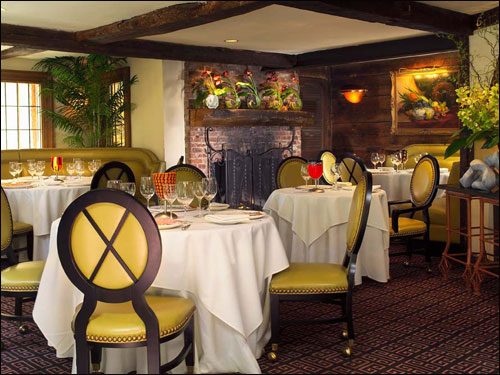
Henkelmann (below) admirably buys only the best American lamb, whose rack he serves with a spicy olive tapenade and herb crust, with creamy pommes Anna and a thyme-scented lamb jus. It's a bit fussy, a bit too much, but classically correct. Now that tiny, sweet Nantucket bay scallops are in the market, he makes the most of them by doing the least to them: they are sautéed for about 30 seconds and placed on pommes purée in a crisp potato basket. The complex accouterments of crisp potato scales, fennel, a tomato fondue, and bouillabaisse sauce compromised an otherwise pleasant sea bass.
In between the classic and the contemporary is a marvelous rendering of that old staple, tournedos Rossini, which usually comes as an overcooked filet mignon with a slab of canned foie gras, and a cloying red wine reduction. Instead, Henkelmann quickly sears the filet to rare, places a generous slice of seared fresh foie gras, and graces it in a translucent reduction of sauce périgueux.
Desserts like his meringue vacherin with vanilla ice cream and raspberry sorbet, and a warm chocolate soufflé with pistachio ice cream and candied pistachios show the same canny balance of the tried-and-true with the bright-and-new.
The winelist here--850 labels strong—-ranks with top restaurants in Manhattan. While understandably biased towards French labels, the list increasingly has American selections of real stature, including Flowers Andreen and Gale Cuvée Chardonnay 2004 ($120), Landmark Kastanai Vineyard Pinot Noir 2004 ($110), and Harlan Estate Meritage 1999 ($650).
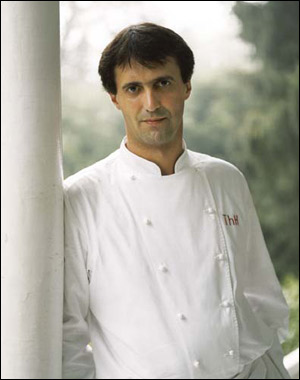 I’m also happy
to see more wines under $100 than there used to be, with several under
$50, and
mark-ups are not nearly as high as they were a few years ago. The more
expensive wines are actually marked up less than the cheaper ones.
Thus, a
modest Barone Ricasoli Castello di Brolio 1999, which sells at
wineshops for
about $40, is here an inflated to $130. But
the mark-ups on some of the Burgundies are not bad at all: a Domaine de
la
Vougeraie Gevrey-Chambertin “Les évocelles” runs about $85 in
the store; here
it’s $160. A very rare and irreplaceable wine like Domaine
Romanée-Conti
Romanée-Saint-Vivant 1999 will run you about $600 in a shop--if
you could find
it; Henkelmann sells it for $900.
I’m also happy
to see more wines under $100 than there used to be, with several under
$50, and
mark-ups are not nearly as high as they were a few years ago. The more
expensive wines are actually marked up less than the cheaper ones.
Thus, a
modest Barone Ricasoli Castello di Brolio 1999, which sells at
wineshops for
about $40, is here an inflated to $130. But
the mark-ups on some of the Burgundies are not bad at all: a Domaine de
la
Vougeraie Gevrey-Chambertin “Les évocelles” runs about $85 in
the store; here
it’s $160. A very rare and irreplaceable wine like Domaine
Romanée-Conti
Romanée-Saint-Vivant 1999 will run you about $600 in a shop--if
you could find
it; Henkelmann sells it for $900.The commitment the Henkelmanns have made to every detail at The Homestead Inn, from bedsheets to bread rolls, is perfectly obvious to the very well-heeled clientele that lives and works in and around Greenwich. Which is why you never see an empty seat here, even on weeknights. Getting a table on Friday or Saturday is as tough as getting into any comparable Manhattan restaurant.
And those seats, once filled with doddering Old Money, have largely been replaced by amazingly young money from the finance world. So while a blue blazer will still do just fine, a bespoke blue suit might be even better.
POLPO
554 Old Post Road
203-629-1999
www.polporestaurant.com
Quite literally tucked away on a hairpin turn off the Post Road is the affable and extremely gregarious Polpo, an Italian restaurant (whose name means "octopus") set on two stories of a pleasantly rustic, 100-year-old pillared mansion full of dark polished wood, ceiling beams, Oriental rugs, and well-set tables with starched linens and pleasing stemware. There's outdoor dining in warm weather, which I suspect is very very popular in such a leafy atmosphere.
Now seven years old, there's a lot to be said for a jolly restaurant with impeccable décor that draws a crowd from Greenwich, New Canaan, Darien, and Westchester County. Still, why does such a delightful atmosphere need to be so blisteringly loud that it's difficult to hear the person across the table from you? If you don't mind a high noise level, sitting in the piano bar should increase your enjoyment of the evening out here.
Chef Franco Maltagliati, a Milanese who's opened several restaurants with partner Ron Rosa, including Campagna and Ecco in Manhattan, offers a very large menu with specials each night, with both hot and cold antipasti that include sautéed calamari in a hot fra diavolo sauce (also available fried with marinara). Grilled octopus is graced with flecks of rosemary, and baby artichokes are stuffed with nuts, breadcrumbs, herbs, and garlic. There is also a raw bar here featuring all the fresh seafood you could possibly want. Yet a fine crab cocktail came as a rather small portion for $18.
Small does not, however, apply to the pastas, when even the appetizers portions are very generous: Rigatoni all'amatriciana, with perfectly good macaroni, and a good dose of onions and pancetta bacon with the tomato sauce, was excellent and hearty, as was an even better fusilli alla napoli with eggplant, fresh mozzarella, and tomato. I tried Polpo's penne vodka mainly because it is a telltale dish--either delicious or bland; Polpo's was first-rate, the al dente penne teamed with spinach and sausage, cuddled by a spicy vodka-tomato bath.
 "Angry Lobster" is one of the signature
items on the menu, but frankly, with the lobsters starting at six
pounds the night I visited (at $30 per pound), I would have needed a
few more guests to tackle the
monsters. Instead, we went for superlative double-cut Colorado lamb
chops grilled to rosy red with a gloss of olive oil laced with garlic
and fine herbs. Dover sole was only all right, the fish itself far from
the fattest example of sole I've had this winter, and it was a tad
overcooked. Another specialty here is porchetta,
roast suckling pig, which is again served with largess and had nicely
crisp skin' the
meat itself was velvety, oozing the sweetness of fat and
the dish is filling in the best sense of satisfaction, so the dish didn't
need the somewhat gluey sauce that accompanied
it. At $28 it is a bargain. The veal
chops here are as good as any I've had, and the benediction of white
truffles gilds these lilies in a refined manner.
"Angry Lobster" is one of the signature
items on the menu, but frankly, with the lobsters starting at six
pounds the night I visited (at $30 per pound), I would have needed a
few more guests to tackle the
monsters. Instead, we went for superlative double-cut Colorado lamb
chops grilled to rosy red with a gloss of olive oil laced with garlic
and fine herbs. Dover sole was only all right, the fish itself far from
the fattest example of sole I've had this winter, and it was a tad
overcooked. Another specialty here is porchetta,
roast suckling pig, which is again served with largess and had nicely
crisp skin' the
meat itself was velvety, oozing the sweetness of fat and
the dish is filling in the best sense of satisfaction, so the dish didn't
need the somewhat gluey sauce that accompanied
it. At $28 it is a bargain. The veal
chops here are as good as any I've had, and the benediction of white
truffles gilds these lilies in a refined manner.The Italian desserts are fairly predictable--napoleon, cheesecake--and O.K. for that.
The winelist has plenty of room to roam around in at any price, particularly strong in Italian bottlings. The cocktails are not cheap--a margarita at $15 is getting way up there.
As noted, a great deal of Polpo's popularity is in the warm, sincere greeting by the owners and the chance of meeting a lot of friends from the area as regulars. Add to that a generosity of spirit (though too much in the noise department) and you have a cheery, solid place that aims to please everyone and quite probably does.
Polpo is open for lunch Mon.-Fri., and dinner nightly; Antipasti run $12-$18; pastas as main courses $24-$28; main courses $24-$46.
NEW YORK CORNER
 Ben
Benson's Steakhouse
Ben
Benson's Steakhouse123 West 52nd Street
212-581-8888
www.benbensons.com
The other night, with my wife and strapping younger son in tow, I headed for Ben Benson's for the very simple reason that I wanted to enjoy a good piece of steak and a big fat lobster with a good bottle of wine and a slab of cheesecake for dessert. I hadn't been back for a year or more, and both the greeting by Mr. Benson (left) and his manager Brian Jontow, along with the veteran waitstaff, made me feel quite at home from the moment I pushed through the door, past the bar, and up a step or two to the dining room decked out with fine, well-aged Americana. As ever, the place was packed; indeed, Ben said he's had the best year ever, despite competition from dozens of other new steakhouses around NYC. The fidelity of Benson's customers has as much to do with the conviviality and greeting here as it does with the consistent quality of the beef, for which Benson fights to keep at a level others reach only on occasion. When you've been dealing with the meat market guys for decades, you have a real edge over newcomers. And the other ingredients fall right into line.
Let me reprise (and add to) an assessment of BB's I wrote a few years back, for little has changed in the 25 years the place has been in business; then again, Ben is always changing something if he thinks it's better.
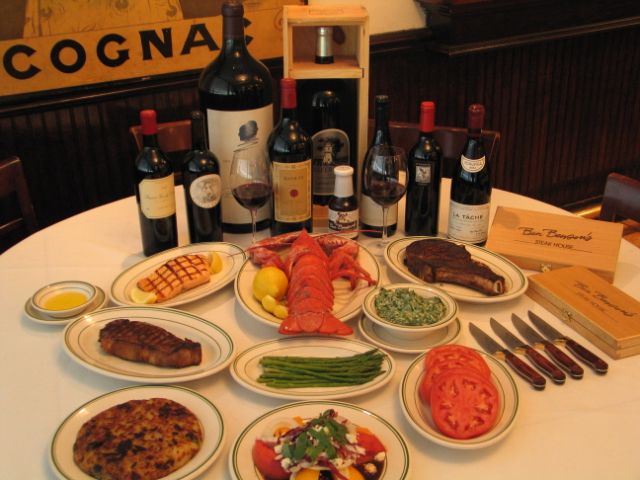
The room never ages because the American folk art throughout and the classic New Yawk steakhouse look of plank floors, wainscoted walls, big tables with white napery, and rolling carts of food is forever comforting and handsome, albeit in a masculine sort of way women seem to enjoy too. The menu, now on one lengthwise sheet, has plenty to offer beyond steaks, and there are daily specials like chicken pot pie on Monday, roast turkey on Tuesday, and so on through Friday. Benson is always trying to improve details, so he recently switched from Irish soda bread ("The company we used started making it in too large a batch," he griped) to delicious raisin nut bread in the basket.
We began with lump meat crab cocktail with those lumps as big as they get, white and sweet. Lemon pepper shrimp are always good here, the crabcake is fat and all crab, and I've liked the soups through the years, including the beef barley always on the menu. This time I tried a crabmeat casserole gummed up by a heckuva lot of mushrooms cloying up the crabmeat in a bland bubbly sauce.
The beef is all USDA Prime from the highest end of a much-abused grade. The reason BB gets the best beef in the brutally competitive
 The
kitchen, under longtime vets
chefs Danny Rivas and Benjamin Javier, doesn’t make
mistakes because there’s no celebrity back there, just
heat-hardened pros
who know how to work an 800-degree grill and steam a lobster till
tender as
butter.
The
kitchen, under longtime vets
chefs Danny Rivas and Benjamin Javier, doesn’t make
mistakes because there’s no celebrity back there, just
heat-hardened pros
who know how to work an 800-degree grill and steam a lobster till
tender as
butter.Desserts have never been the strong point here, but Ben is as on top of them as anything else. After decades of serving the famous Bronx-made S&S Cheesecake that is just about standard in every steakhouse in New York, he switched to Two Little Red Hens Bakery because he got tired of S&S delivering only twice a week not being able to get the cakes on Jewish holidays when that bakery is closed.
And there's the key to BB's success: while so many other NYC steakhouses have expanded to so many other cities, losing all their individuality along the way--even if their NYC original retains some soul--Ben Benson's soul has never evaporated in the corporate culture. So, if you love Ben Benson's today, you'll love it tomorrow and next year, too.
Ben Benson's is open Mon.-Fri. for lunch and daily for dinner. Appetizers run $9-$19, entrees $27-$79 (with lobsters by the pound).
NOTES FROM THE WINE CELLAR
VERY
NICE ICE
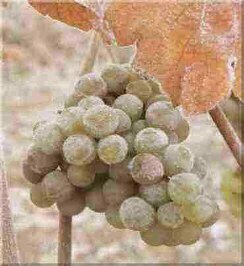 Before you go out and pay $125 for a half-bottle
of Château
d’Yquem Sauternes, you might want to consider an alternative from
(brace
yourself). . . Canada, specifically Inniskillin Ice Wine made in
Ontario
and costing $32.50 for a half-bottle. This is a dessert wine of
luscious
distinction, like cotton candy in a glass, like a bite from an
almost-too-ripe
nectarine. Or you could move up to Inniskillin’s 2002 Riesling, at $75,
which
has a more refined sweetness with lovely acidic balance.
Before you go out and pay $125 for a half-bottle
of Château
d’Yquem Sauternes, you might want to consider an alternative from
(brace
yourself). . . Canada, specifically Inniskillin Ice Wine made in
Ontario
and costing $32.50 for a half-bottle. This is a dessert wine of
luscious
distinction, like cotton candy in a glass, like a bite from an
almost-too-ripe
nectarine. Or you could move up to Inniskillin’s 2002 Riesling, at $75,
which
has a more refined sweetness with lovely acidic balance.True, ice wines are not the same thing as a Sauternes or a German trockenbeerenauslese, both made from grapes that have been attacked by a fungus called botrytis (in Europe heralded as the “Noble Rot”), which shrivels the grapes and gives the resulting wine, with 14% alcohol and 4-8% residual sugar, a nutty sweetness best appreciated only after many years of aging.
Ice wines, on the other hand, are made from healthy grapes left on the vine until the first winter freeze, picked with the ice crystals still in them, which has the effect of intensifying the sweetness by dehydration, resulting in very little juice. The picking of the frozen grapes must be carefully monitored, especially if a freeze comes late in the season, because the grapes may just wither away or be eaten by birds, so netting is usually placed over selected vineyards. Even then the grapes are picked by hand, with the rotted grapes discarded, producing a yield that may be only 5-10 percent of the entire crop. The remaining grapes are then pressed, and the juice fermented and aged for a few months, when the alcohol level stops naturally between 10-12 percent, with about 20-22% residual sugar.
The legend is that ice wines were discovered by accident when an 18th Century German baron left his estate one summer’s day for one war or another, neglecting to instruct his obedient but dull-witted peasants to pick the grapes and make wine in the fall. Upon his return that winter, he found the grapes still on the vine and frozen. Trying to salvage some of the crop, he found the remaining grapes produced an extraordinary sweet “eiswein.” Whatever the truth of the matter, eisweins became a curiosity among connoisseurs in Germany and Austria.
But North American winemakers, who are nothing if not experimental, have increasingly been making small batches of ice wines, when the conditions allow. Canada’s Inniskillin, which makes a range of table wines including Chardonnay, Pinot Blanc, Cabernet Franc, and Pinot Noir at their estates in Ontario’s Niagara Peninsular and in the Okanagan Valley in British Columbia, started experimenting with ice wines in 1984, using Vidal grapes, and in 1991 their ’89 vintage won the Grand Prix d’Honneur Award from Vinexpo in Bordeaux, France. Inniskillin now makes ice wines from Vidal, Riesling, Gewürztraminer, and even the red grape Carnet Franc, which produces a lovely rose-colored, spicy, floral ice wine.
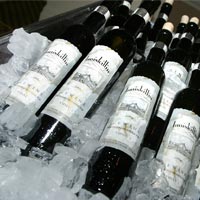
In a tasting of two dozen ice wines, I found Inniskillin’s seven entries among the very best, some almost candy-like but with acid enough not to be cloying after two sips. There were also some impressive ice wines from New York State, especially from the Finger Lakes region, and in the state of Washington. Of all those I tasted I liked most 2002 Standing Stone Vidal (about $27) from the Finger Lakes, with a green-gold color and lovely vanilla nuances; the best of the Washington ice wines was a 2002 Covey Run Reserve Riesling (about $21), which is more medium sweet, with tangy, citrus flavors to balance things. My favorite among the German entries was a 2001 Johannes Selbach Oster Zelt Himmelweiss Riesling, a very pretty example of a traditional eiswein with real breeding, though at $115, a lot more than comparable Canadian and U.S. ice wines, which can be had for $20 up to about $90.
Thus, while you’re waiting around for your $100+ Sauternes to mature, you might want to pass the time with one of these exceptional new dessert wines for a whole lot less, which may be an added part of their enjoyment.
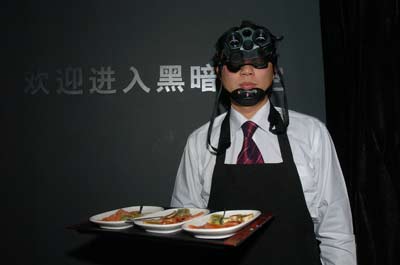
AND NOW FOR A STORY OF HOW BEIJING WAS ALMOST OVERRUN BY RATS UNTIL THE CITY'S BRAVE AND GLORIOUS RESTAURATEURS BANDED TOGETHER AND . . .
In Beijing, a pitch black restaurant prohibits customers from using flashlight or any glow in the dark accessories in there. Customers are seated by waiters who night goggles. While eating dinner, a show in the dark tells "spooky stories."
HEY, HE'S ALREADY GOT THE MOUTH FOR VEGAS!
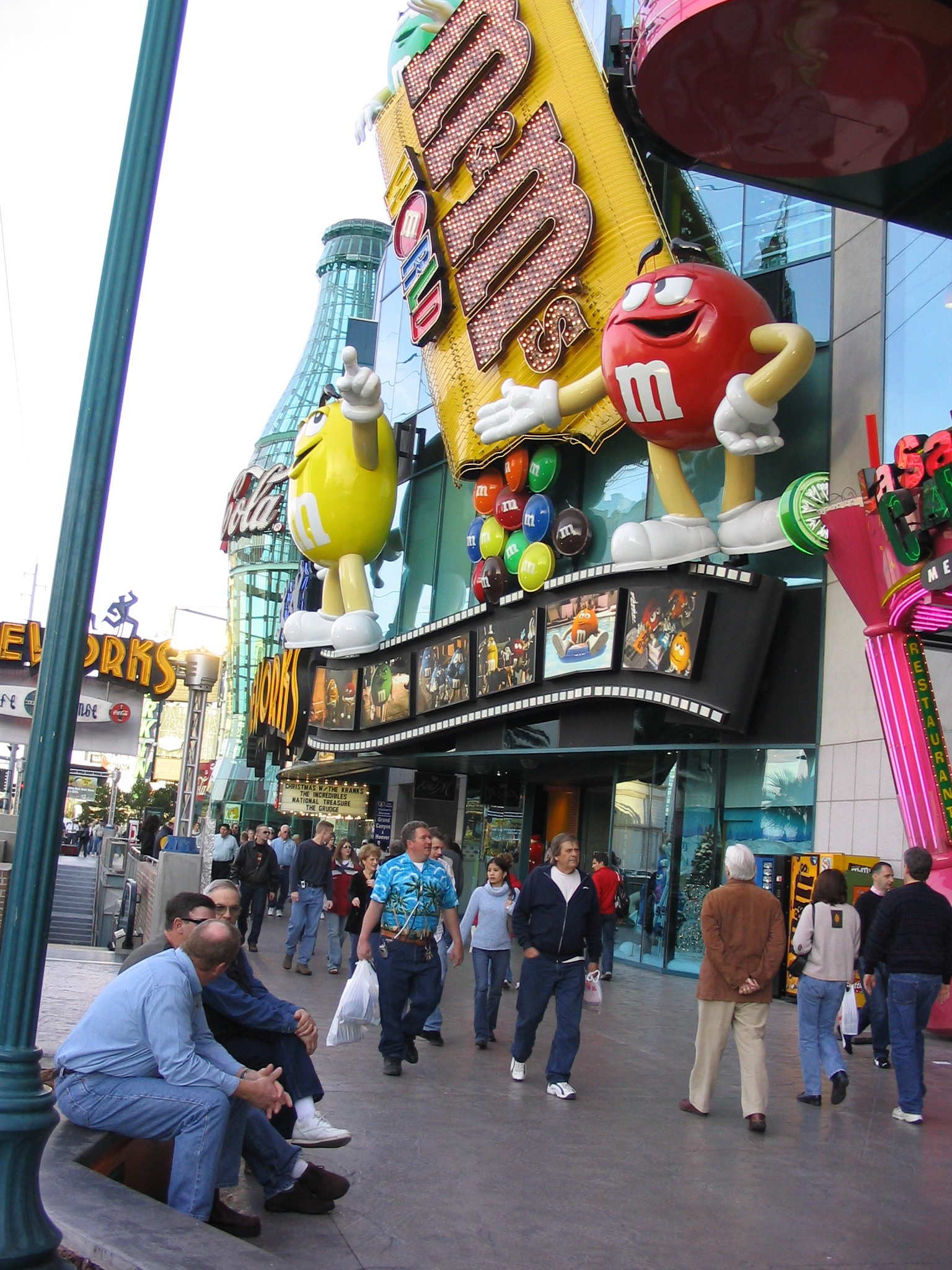
“People take a big s--t on Vegas, but to a restaurant owner or chef, it’s so f------g hard to open a restaurant in
QUICK BYTES
* The Biltmore in Coral Gables, FL, plans a Valentine's Day Package that incl. Champagne & strawberries upon arrival; a 30-minute Horse & Carriage ride through Coral Gables; The Chardonnay Signature Spa Ritual with a Wine Therapy Bubble Bath followed by the French Chardonnay grape
* On Feb. 18 a Silver Oak Wine Dinner will take place at L'Escalier at The Breakers Palm Beach, with Master Sommelier Virginia Philip and L'Escalier's Chef Kevin Ives, along with Silver Oak's VP Tom Johnson. The dinner will also include a barrel tasting. $300 pp. Visit www.thebreakers.com
~~~~~~~~~~~~~~~~~~~~~~~~~~~~~~~~~~~~~~~~~~~~~~~~~~~~~~~~~~~~~~~~~~~~~~~~~
MARIANI'S VIRTUAL GOURMET NEWSLETTER is published weekly. Editor/Publisher:
John Mariani. Contributing Writers: Robert Mariani, Naomi
Kooker, Kirsten Skogerson, Edward Brivio, Mort
Hochstein, Suzanne Wright. Contributing
Photographers: Galina Stepanoff-Dargery, Bobby Pirillo. Technical
Advisor: Gerry McLoughlin.
Any of John Mariani's books below
may be ordered from amazon.com by clicking on the cover image.
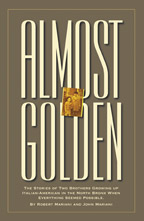 My
newest book, written with my brother Robert Mariani, is a memoir of our
years growing up in the My
newest book, written with my brother Robert Mariani, is a memoir of our
years growing up in the For those of you who don't think of the Robert and I think you'll enjoy this very personal look at our --John Mariani |
 |
 |
 |
 |
 |
 |
copyright John Mariani 2007
